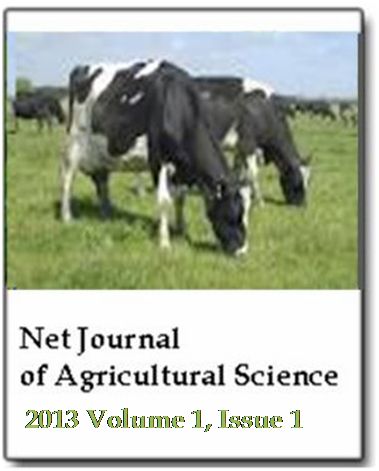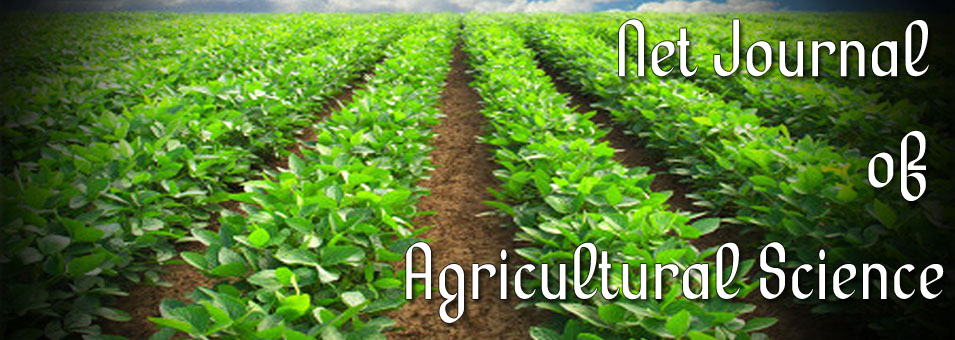Genotype by environment interaction and grain yield stability analysis of rice (Oryza sativa L.) genotypes evaluated in north western Ethiopia
Sewagegne Tariku, Taddesse Lakew, Mulugeta Bitew and Mitiku AsfawNet Journal of Agricultural Science
Published: March 7 2013
Volume 1, Issue 1
Pages 10-16
Abstract
Sixteen rainfed lowland rice genotypes were evaluated at three locations of eight environments in north western Ethiopia from 2006 to 2008 to identify stable and high yielding genotypes for possible release. The experiment was conducted using Randomized Complete Block Design with three replications. Combined analysis of variance showed highly significant differences among genotypes, environments and genotype by environment interactions for grain yield. The additive main effects and multiplicative interaction (AMMI) analysis of variance indicated that the genotype-by-environment interaction sum of squares was about 3.5 times larger than that for genotypes, which determined substantial differences in genotypic response across environments. The presence of genotype-by-environment interaction was clearly demonstrated by the AMMI model, when the interaction was partitioned among the first four interaction principal component axis (IPCA) which cumulatively captured 91.13% of the total GEI. The stability study indicated that among the tested genotypes, no variety was found to be stable; however, genotypes such as GEN13, GEN12, GEN10 and GEN9 showed high yield potential in favorable environments. In this study, environments (testing locations) fell into three sections, where most of the tested genotypes showed specificity. However, some of the genotypes were not found to be best to any of the environments. As a breeding strategy on rice in the country, it is suggested to execute national variety trial at a number of locations to cluster the testing locations into homogenous groups. This can bring a difference in the rice sector of the country. Among the tested genotypes, the highest grain yield was obtained from genotypes GEN13, GEN12 and GEN9 (4.07, 3.96 and 3.69 t ha-1, respectively) across environments. Out of the tested genotypes, three genotypes were selected and verified, of which genotype “GEN9” has been officially released with the vernacular name “EDGET” meaning development, for large scale production.
Keywords: Additive main effects and multiplicative interaction, rice, stability, genotype-by-environment interaction.
Full Text PDF
